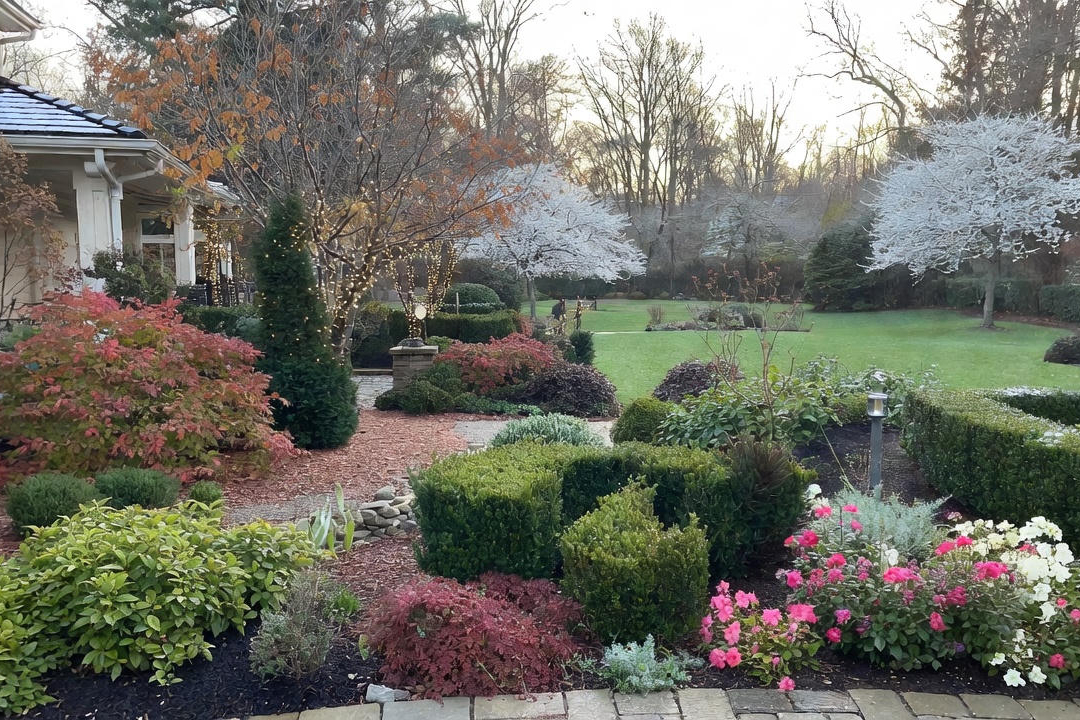
Hellebores are long-lived perennials that belong to the buttercup (Ranunculaceae) family. It’s exciting that they are in vogue for the garden once again. These evergreens are a welcome sight as their blossoms typically arrive in early through late winter while most flowering plants are still sleeping. The blooms are often downward facing, although current varieties have been bred to face outwards. Don’t forget to bring some indoors, as hellebores make wonderful cut flowers.
They are simply perfection planted in shady borders and woodland gardens. Hellebores have nothing to fear from hungry deer or rabbits as the plant is toxic to them (and the terrible flavor of the foliage warns them).
You may have heard them called ‘Christmas Rose’ or ‘Lenten Rose’. However, these names define two different species. Helleborus niger (Christmas Rose) blooms with shimmering white flowers around Christmas time. ‘Niger’ refers to the plant’s black roots as opposed to describing the flowers. Helleborus orientalis and Helleborus x hybridus (Lenten Rose) blooms around February around Lent through the early spring. You’ll find the most diverse colors, shapes, and characteristics within the Lenten group.

Plant Profile
There are about 20 recognized hellebore species to explore.
Zones: 4-9
Sun/Shade: Light shade/filtered sun
Height: 12”- 24” inches tall
Width: 18” – 24” wide
Bloom Time: December to April
Bloom Color: Various shades of rose, white, purple, yellow, apricot, purple, green, and black.
Wildlife: Hellebores attract bees. Due to their toxicity, deer and rabbits steer clear of the plant.
Cultivation
Hellebores prefer to be situated in partial, dappled, or full shade during the heat of summer. They like well-draining soil with a neutral to slightly alkaline pH soil. They thrive in soils rich in organic matter, so be generous with the compost.
Dig individual planting hole about 15” inches apart from each other so they have room to spread out as they mature. The holes should be only as deep as the pot they came in, so the hellebore’s crown sits flush or slightly above the soil line once planted. Don’t add any fertilizer to newly planted hellebores. However, a little balanced organic fertilizer each spring is beneficial. Water them well after planting.
They will need about an inch of water per week while they adjust to their new bed. Hellebores are drought-tolerant once established, however, they’ll need periodic watering during long dry spells. All of this said, they are happiest in moist, well-drained soil.
Varieties
Check out these popular flowering plants that were made for the shade!
- Christmas Rose (Helleborus niger) blooms mid-winter with large, glisten white flowers with vivid yellow centers (resembles like a fried egg). Matures to 12”-15” tall and 18” wide.
- ‘Pink Frost’ (Helleborus x ballardiae) is a large Lenten rose that blooms late January to early spring. This stunning hybrid has triple-layered, fluffy pink petals with maroon speckles and stripes. Matures to 28” inches tall and
- ‘Pippa’s Purple’ (Helleborus x iburgensis) blooms late winter to early spring with cupped, purple-red blossoms. Matures to 18” tall and 24” wide.
- ‘Confetti Cake’ (Helleborus x hybrid) is a spring bloomer from the Wedding Party™ collection. Stand out party flowers of white with burgundy speckles. Matures to 24” tall and wide.
- ‘Dark and Handsome’ (Helleborus x hybrid) is a spring bloomer that’s part of the Wedding Party™ series. It boasts double, black-purple blossoms with lime green centers. Matures to 24” tall and wide.
Special Features
A fun fact about hellebores is that the “flowers” aren’t flowers at all! They are modified leaves called ‘sepals’ which are there to help protect the flowers when they are at bud stage. True hellebore flowers are quite nondescript.
*Hellebores are toxic to people, cats, dogs, horses, and other mammals and should not be ingested.
Download iScape now and create landscape designs that improve curb appeal and transform gardens. iScape it!




ds.jpg)
.jpg)
